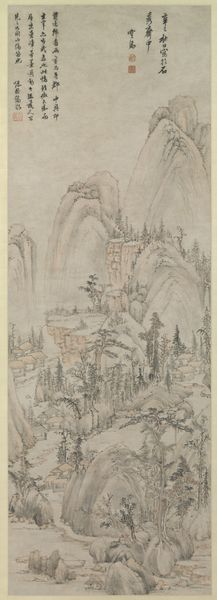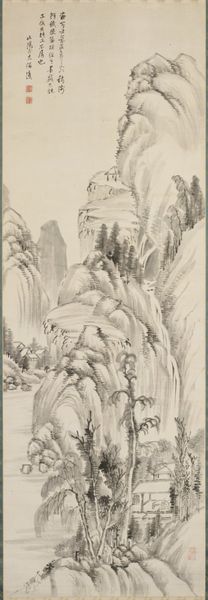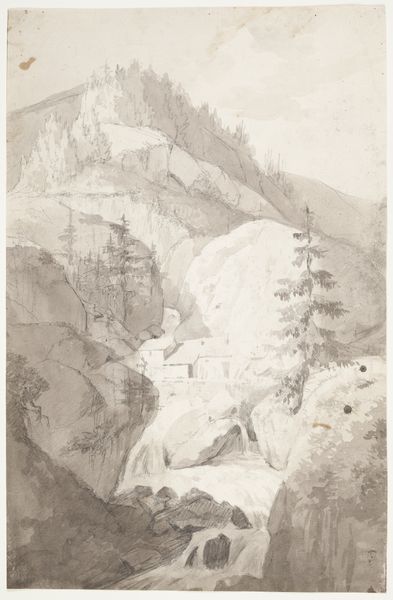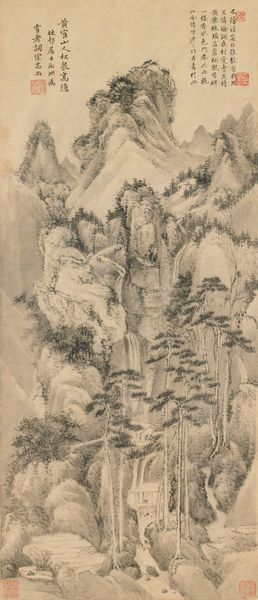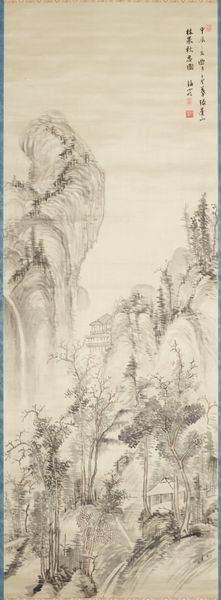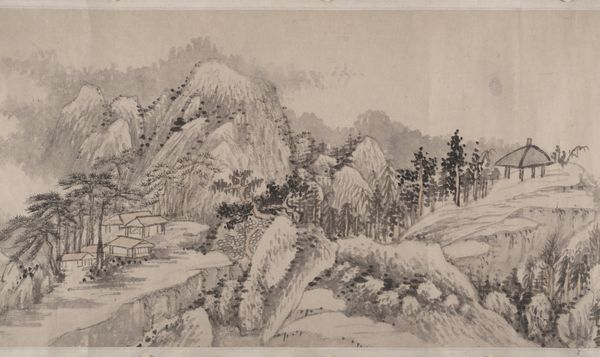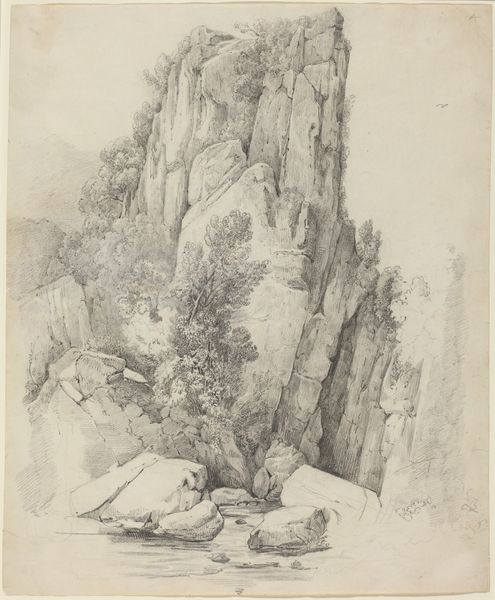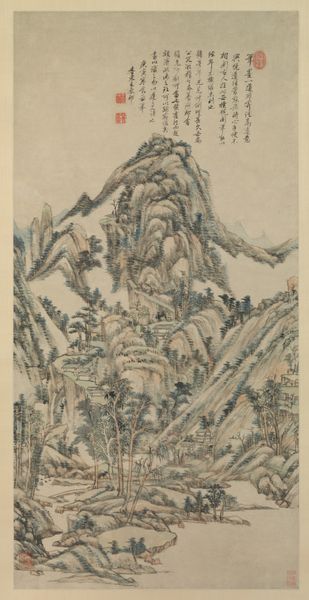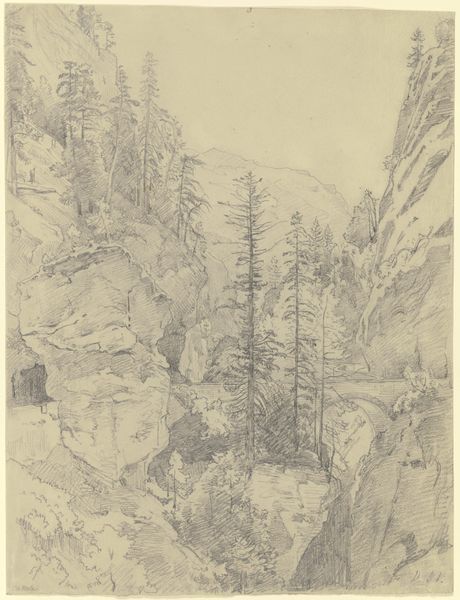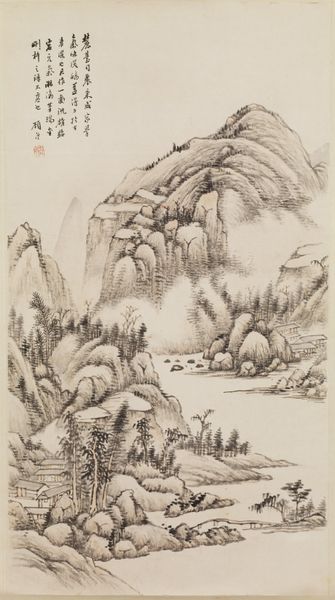
The Soughing of the Wind in the Pines Echoes the Melody of Spring 1705
0:00
0:00
drawing, hanging-scroll, ink
#
drawing
#
ink drawing
#
ink painting
#
asian-art
#
landscape
#
hanging-scroll
#
ink
#
line
Dimensions: 56 15/16 × 19 9/16 in. (144.62 × 49.69 cm) (image)81 1/2 × 25 3/4 in. (207.01 × 65.41 cm) (overall, without roller)
Copyright: Public Domain
Curator: Standing before us is Shen Zongjing's evocative ink drawing from 1705, aptly titled "The Soughing of the Wind in the Pines Echoes the Melody of Spring." It's a hanging scroll, currently housed right here at the Minneapolis Institute of Art. Editor: It strikes me as almost monochromatic, a hushed landscape where the wind itself seems to whisper through the pines, doesn’t it? There's a stillness, a meditative quality to the way the ink defines form and space. Curator: Indeed, and it's important to understand the context of landscape painting in China. This isn't just about depicting scenery; it's about conveying philosophical ideas, a harmonious relationship between humanity and nature. The individual dwarfed by these massive peaks reflects Confucian ideals of humility and Taoist appreciation of the natural world. Editor: Do you think that humility is reflected in the lack of color? Because even without vibrant hues, there’s so much movement, such dynamic energy. The way the artist uses line… It feels like I can sense the air currents around those mountains. Curator: Exactly. The controlled chaos of the brushstrokes, the varying ink densities – these techniques aim to capture not just the visual likeness of the scene but its very essence. Editor: It almost feels subversive, in a way. The emphasis on negative space, on the subtle nuances of ink wash, moves beyond the hyper-masculine heroic narratives so common in much Western art of the time, instead privileging quiet observation and interconnection. Curator: A counter-narrative that celebrated restraint and inward reflection. Even the presence of figures – see that solitary figure on the bridge? They’re integrated into, not dominating, the landscape. Editor: They feel almost ephemeral, ghosts in the landscape. It's interesting how art, especially landscape, can reveal so much about power dynamics, about who belongs, and who is seen. Curator: And in this scroll, the invitation to belong lies in contemplating the harmony of nature. It asks us to listen—to the soughing of the wind. Editor: Absolutely, a reminder that art can transcend representation and become an experience. Curator: Yes, leaving you contemplating something beyond just a visual. Editor: A soundscape, almost. A melody of the spring, even in monochrome.
Comments
minneapolisinstituteofart about 2 years ago
⋮
Shen Zongjing, a scholar-official painter of the early 1700s, often painted mountains and streams in shades of black and gray, a manner favored by other scholar-artists. His works express lofty, powerful thoughts. This type of landscape painting is known as chenghuai weidao, or “purifying one’s mind to savor Dao.” Here, the term “Dao” refers to the essence of the phenomena embodied in nature. Such paintings always portray one or several seated gentlemen gazing into distant mountains and waterfalls. It is through such communion between humans and nature that an awakening or sublime transcendence of mortal bounds is sensed.
Join the conversation
Join millions of artists and users on Artera today and experience the ultimate creative platform.

